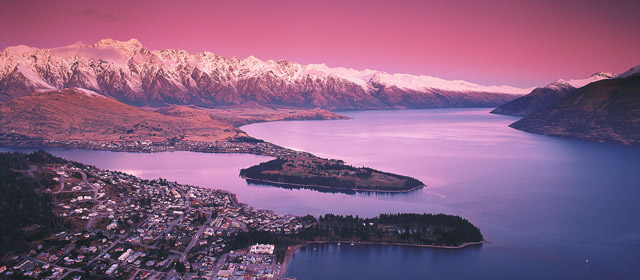Story summary
Lake facts and figures
- New Zealand is a land of lakes: it has 775 that are at least half a kilometre long.
- The largest is Lake Taupō at 623 square kilometres – the size of Singapore. It fills a hole in the centre of the North Island, formed by a massive volcanic eruption.
- The South Island has eight of the 10 biggest lakes. They were formed by glaciers and include Lakes Wakatipu, Tekapo and Manapōuri.
- The deepest (462 metres) is Lake Hauroko, in western Southland. It is the 16th deepest lake in the world.
- New Zealand homes are powered mainly by hydroelectricity from 60 artificial lakes. The largest is Lake Benmore, on the Waitaki River in the South Island.
- Millions of years ago, Central Otago had a huge lake – Lake Manuherikia. It was slowly filled in with mud, and fossils of fish and crocodiles have been found there.
- The Māori word for lake is ‘roto’ – as in names such as Rotoiti (small lake), Rotomanu (lake of birds) and Rotomahana (warm lake).
Animals
Lakes are home to birds such as ducks, herons, black swans, coots and geese.
The native fish, including eels, are hard to see. Easier to spot are rainbow and brown trout, brought to New Zealand in the 19th century.
Worms, mites, dragonflies, snails, mussels and other small creatures live in and around the lakes. Red-billed gulls like to paddle in the thermal waters of Lake Rotorua.
Plants
Healthy lakes have underwater or floating gardens of ferns and other plants. One plant grows at a depth of 70 metres in a clear Otago lake.
Lake damage
Rivers carry unwanted material into lakes:
- Sewage pollutes clean water.
- When land is cleared of bush, rivers carry the soil into lakes, where it settles on the bottom. This makes the lakes shallower.
- Farm fertilisers run into the lakes, making weeds and toxic algae grow. These use oxygen that fish and plants need to survive.
Hydroelectric dams, built to generate power, also alter the lakes and flood the surrounding land. In 1972, protesters stopped the level of Lake Manapōuri being raised for a power project.
People and lakes
New Zealand’s beautiful lakes are popular for boating, fishing and swimming. Hunters are allowed to shoot ducks, swans and geese in the duck-shooting season. In the far south, people skate on small frozen lakes in winter.





